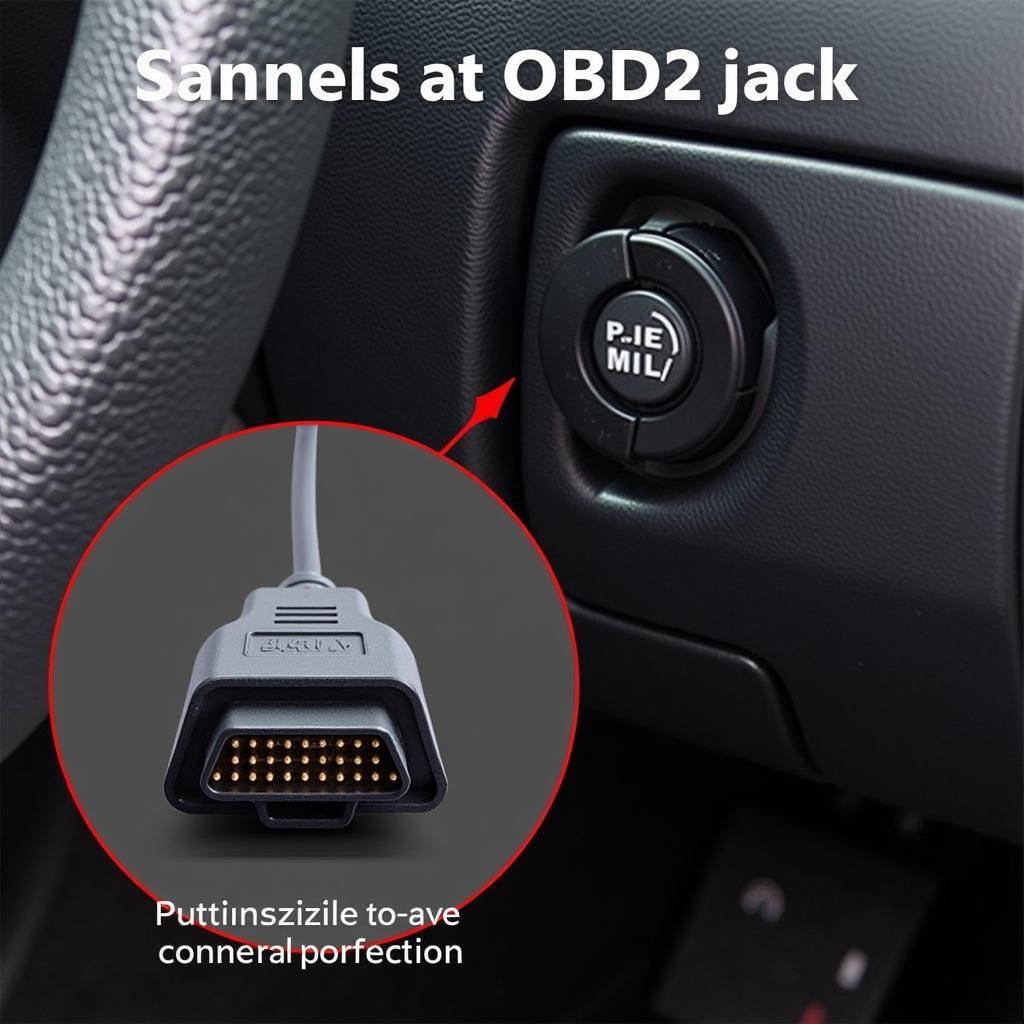The OBD2 jack, also known as the OBD2 port, acts as the gateway to your car’s computer system. This unassuming connector allows you to tap into a wealth of information about your vehicle’s health and performance. But how does this seemingly simple jack unlock such complex data? Let’s dive in and explore the inner workings of the OBD2 jack.
Understanding the OBD2 Jack: Your Car’s Data Hub
The OBD2 jack, typically found under the driver’s side dashboard, provides a standardized interface for communication with your vehicle’s Engine Control Unit (ECU). Think of the ECU as your car’s brain, constantly monitoring and adjusting various systems to ensure optimal performance.
This communication occurs through a standardized set of protocols known as the OBD2 standard, introduced in 1996. This standardization revolutionized car diagnostics by providing a universal language for all makes and models of vehicles.
The Role of the OBD2 Protocol: A Common Language for Cars
The OBD2 protocol establishes a set of rules and commands that allow diagnostic tools, like OBD2 scanners, to interact with your car’s ECU. These commands allow scanners to:
- Read Diagnostic Trouble Codes (DTCs): When your car’s ECU detects a problem, it logs a DTC, which acts like an error code. OBD2 scanners can read these codes, providing valuable insight into the potential issue.
- Monitor Live Data Streams: Want to see your engine speed, coolant temperature, or oxygen sensor readings in real time? The OBD2 protocol allows scanners to access and display this live data.
- Perform Actuator Tests: To confirm if components like solenoids, relays, or actuators are functioning correctly, OBD2 scanners can send commands to activate them.
Inside the OBD2 Jack: Pins with a Purpose
The OBD2 jack features 16 pins, each with a specific function. While not all pins are used in every vehicle, some key pins include:
- Pin 4 (Chassis Ground): Provides a ground connection.
- Pin 5 (Signal Ground): Serves as a ground reference for various signals.
- Pin 6 (CAN High): Used for high-speed communication on vehicles with Controller Area Network (CAN) systems.
- Pin 7 (ISO 9141-2 K-Line): Used for communication on older vehicles.
- Pin 14 (Battery Voltage): Provides the scanner with battery voltage information.
- Pin 16 (Battery Positive): Supplies power to the scanner from the vehicle’s battery.
Putting it All Together: How the OBD2 Jack Works in Practice
-
Connection: When you plug an OBD2 scanner into the jack, a physical connection is established between the scanner and your car’s ECU via the pins.
-
Communication: The scanner sends requests for information to the ECU using the OBD2 protocol.
-
Data Retrieval: The ECU responds to these requests by sending data back to the scanner.
-
Display and Interpretation: The scanner then processes this data and displays it on its screen in a user-friendly format.
FAQs About OBD2 Jacks
Can I use any OBD2 scanner on my car?
While the OBD2 port is standardized, some scanners may be better suited for specific makes and models. It’s always recommended to choose a scanner compatible with your vehicle.
Is it safe to use an OBD2 scanner on my car?
Yes, using a reputable OBD2 scanner is generally safe. However, avoid cheap knock-offs, as they may not adhere to proper communication protocols and could potentially harm your car’s electronics.
What can I do if my OBD2 jack isn’t working?
First, check the fuse for the OBD2 port. If the fuse is blown, replacing it may solve the problem. If the issue persists, it’s best to consult a qualified mechanic.
Need Assistance with Your Car Diagnostics?
We’re here to help! If you have any questions or need expert advice, contact our 24/7 customer support team via WhatsApp: +1(641)206-8880 or Email: [email protected]. Our team is ready to assist you with all your OBD2 and car diagnostic needs.


